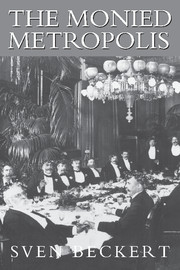Book contents
- Frontmatter
- Dedication
- Contents
- Maps, Graphs, and Illustrations
- Acknowledgments
- Abbreviations
- The Monied Metropolis
- Introduction
- Part I Fortunes, Manners, Politics
- Part II Reluctant Revolutionaries
- 4 Bourgeois New Yorkers Go to War
- 5 The Spoils of Victory
- 6 Reconstructing New York
- Part III A Bourgeois World
- Epilogue
- Notes
- Index
4 - Bourgeois New Yorkers Go to War
Published online by Cambridge University Press: 05 July 2014
- Frontmatter
- Dedication
- Contents
- Maps, Graphs, and Illustrations
- Acknowledgments
- Abbreviations
- The Monied Metropolis
- Introduction
- Part I Fortunes, Manners, Politics
- Part II Reluctant Revolutionaries
- 4 Bourgeois New Yorkers Go to War
- 5 The Spoils of Victory
- 6 Reconstructing New York
- Part III A Bourgeois World
- Epilogue
- Notes
- Index
Summary
On April 20, 1861, the dreadful news of war that had arrived in the city on the Hudson only a few days earlier began to sink in. Throughout the day, New Yorkers, hungry for information, wandered through the streets, and debated heatedly with friends, neighbors, or strangers about what was to come. By afternoon, between 100,000 and 250,000 citizens of the metropolis streamed into Union Square to join a demonstration expressing their outrage at southern aggression and to mobilize for war. The spacious square was so crowded with people that the rally spilled over into adjacent streets, with “Broadway from Fourteenth-street almost to the Battery … a surging mass of human beings.” Rich and poor alike assembled, as stores and factories closed and even the Stock Exchange shut down to allow attendance by its members. “Union Square was a red, white and blue wonder,” reported an awestruck New York Times, the demonstrators listening to speeches “in tones of thunder for the Union, the Constitution and the enforcement of the laws.” When Major Anderson, who had just arrived from Charleston Harbor, appeared, he was welcomed by “an outburst of applause seldom, if ever, equaled.” It was the biggest demonstration the United States had seen in its young history.
- Type
- Chapter
- Information
- The Monied MetropolisNew York City and the Consolidation of the American Bourgeoisie, 1850–1896, pp. 111 - 144Publisher: Cambridge University PressPrint publication year: 2001

